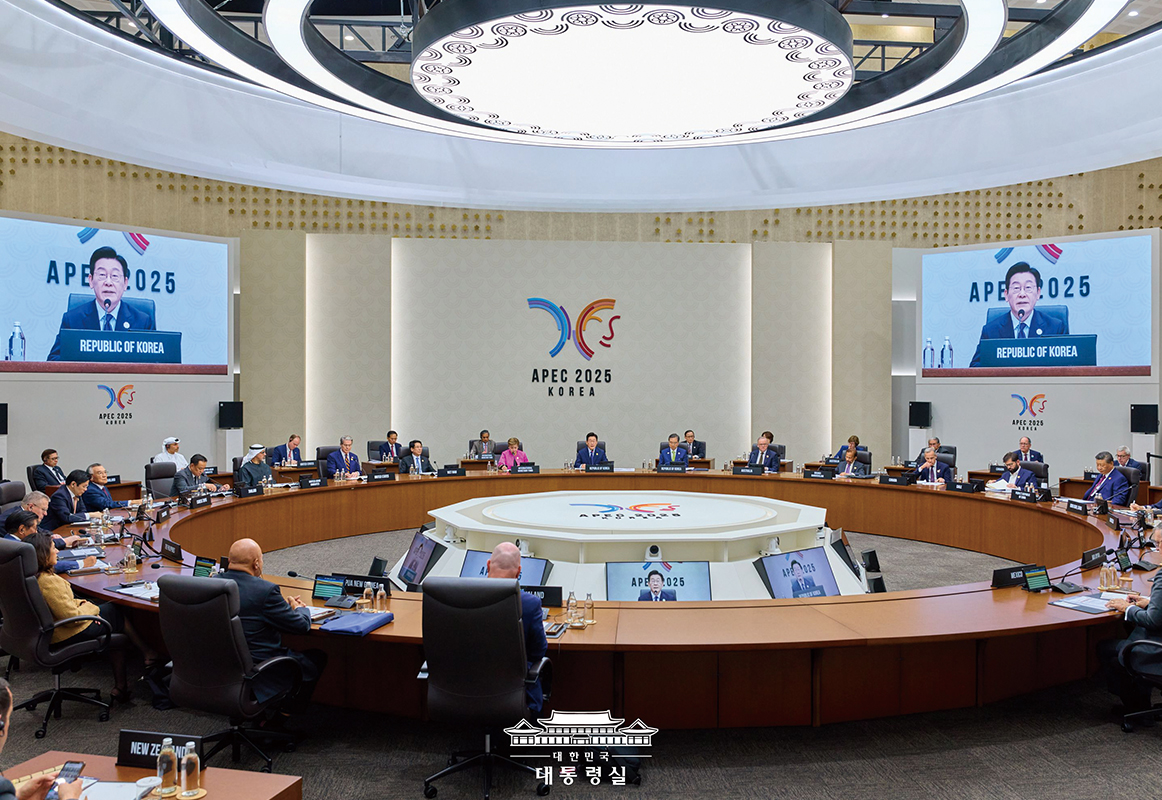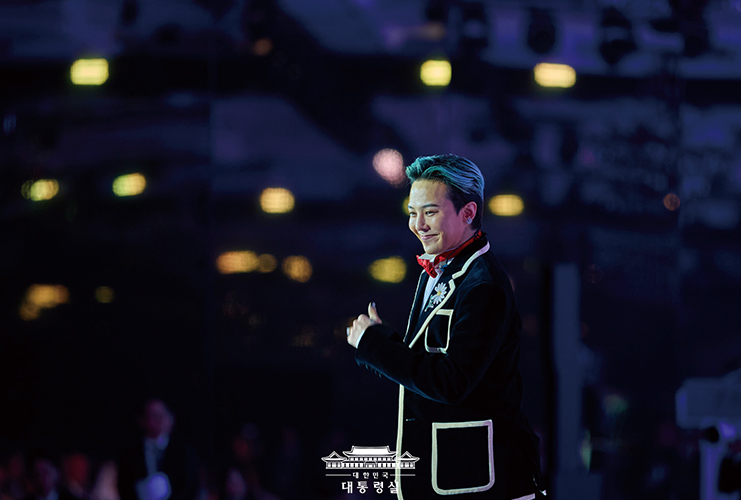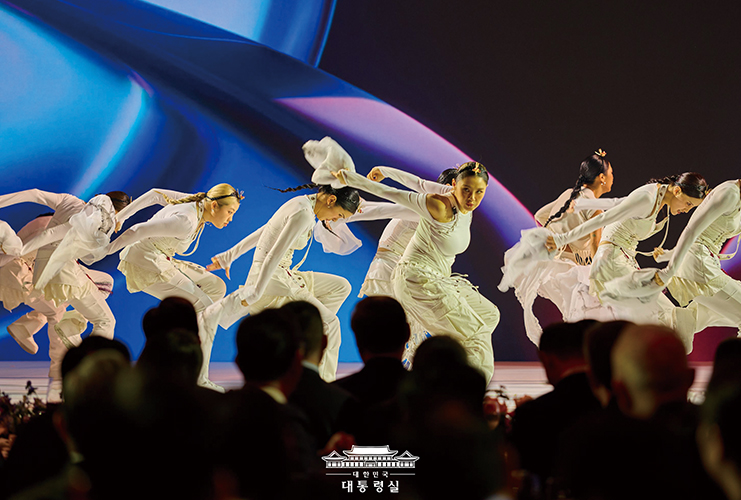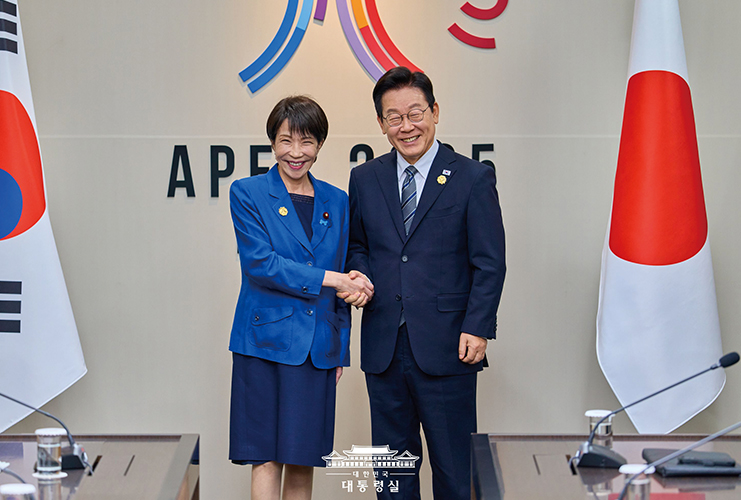
On Nov. 1, Asia-Pacific Economic Cooperation (APEC) 2025 successfully concluded in Gyeongju after bringing together world leaders and CEOs. The meeting opened a new chapter for prosperity in the Asia-Pacific region.
Writer. Kim Da Un
Photos courtesy of. Office of the President
APEC is a forum that promotes policy dialogue and consultation among member countries to foster economic growth and prosperity in the Asia-Pacific region. As this year’s host, Korea presented “Building a Sustainable Tomorrow” as the summit theme, establishing “Connect, Innovate, Prosper” as three key priorities.
On Oct. 28, the APEC CEO Summit drew global attention as the largest in history. On Oct. 29, BTS’s RM took the stage as a keynote speaker, drawing significant attention, while leaders and global business figures continued their speeches and business meetings through Oct. 31.

As the APEC CEO Summit got underway, Korea—as host nation—showcased diverse cultural programming, having positioned “cultural and creative industries” as a core agenda item. Throughout the event, traditional music and dance performances, Hanbok (traditional Korean clothes) fashion shows and exhibitions took place, alongside food booths offering everything from Korean street food to fine dining. Drones and LED media art illuminated outdoor spaces. During the summit welcome dinner, meal preparation was collaboratively managed by Chef Edward Lee, known for his appearance on the Netflix cooking competition show “Culinary Class Wars,” in partnership with Lotte Hotel Seoul. The event also featured a performance by G-DRAGON, the official promotional ambassador of APEC.
As APEC Week unfolded like a festival open to the general public, leaders from 21 member countries gathered at the Hwabaek International Convention Center in Gyeongju on Oct. 31 for the first plenary session. During this session, the heads of state discussed cooperation to promote trade and investment under the theme “Towards a More Connected Resilient Region and Beyond.”
On Nov. 1, the second session focused on developing new growth drivers in the Asia-Pacific region, addressing future economic trends like artificial intelligence and shifting demographics, all within the theme of “Asia-Pacific Vision Prepared for Future Changes.”

The “Gyeongju Declaration,” adopted as the outcome of the two-day meeting, incorporated trade and investment, digital transformation and innovation, and growth for all. To implement the declaration, an “APEC AI (Artificial Intelligence) Initiative” was also adopted, establishing a foundation for all member countries to participate in AI transformation and share its benefits. The initiative’s main components include expanding AI infrastructure investment, capacity building and promoting innovation.
Additionally, an “APEC Collaborative Framework for Demographic Changes” was adopted. Recognizing issues such as declining birth rates and aging populations as common regional challenges, it outlined directions for cooperation across five priority areas, including building resilient social systems, modernizing human resource development, and strengthening technology-based healthcare and care services.
Korea also proposed cultural and creative industries as a new growth engine to address AI and demographic changes. As a result, “cultural and creative industries” were mentioned in APEC leadership documents for the first time in the organization’s history. This is seen as a milestone in establishing the cultural industry, including K-culture, as a new growth driver for the Asia-Pacific region.


This APEC meeting also created opportunities for exchanges between national leaders.
President Lee Jae Myung held a series of bilateral meetings with various leaders ahead of the conference. In talks with U.S. President Trump, the two leaders reached a Korea-U.S. tariff agreement. The two countries agreed to a USD 350 billion investment package with annual repayments capped at USD 20 billion. Mutual tariffs were reduced to 15%, with automobile and parts tariffs adjusted to the same rate. This agreement is expected to further solidify bilateral economic cooperation.
In subsequent talks with Chinese President Xi Jinping, both sides agreed to deepen their strategic cooperative partnership. The two countries signed a KRW 70 trillion (5-year maturity) won-yuan currency swap to strengthen practical economic cooperation centered on people’s livelihoods, and concluded six memorandums of understanding to promote service and trade exchanges. These also included cooperation in elderly-focused industries and innovative entrepreneurship. Both leaders recognized the importance of establishing peace on the Korean Peninsula and regional stability, and agreed to strengthen cooperation in combating scam crimes.
President Lee also met with newly inaugurated Japanese Prime Minister Takaichi, where they recognized the need for cooperation across various fields, including advanced technology, economic security and social and cultural areas. Both leaders agreed to develop Korea-Japan relations based on trust and communication, continue shuttle diplomacy between leaders and strengthen future-oriented cooperation.
Additionally, meetings were held with Mark Carney, prime minister of Canada, Christopher Luxon, prime minister of New Zealand, Anutin Charnvirakul, prime minister of Thailand, Luong Cuong, president of Viet Nam, Ferdinand Marcos Jr., president of the Republic of the Philippines, Gabriel Boric, president of Chile, Prabowo Subianto, president of Indonesia, and Lawrence Wong, prime minister of Singapore to discuss bilateral relationship development.
Throughout the conference, the major powers engaged actively in multilateral diplomacy. Summit meetings between the United States and China, China and Japan, and the United States and Japan addressed various issues including economics, tariffs, security and exports. The APEC meeting is significant as a turning point that reconnects nations and promotes the restoration of balance in the global economy.

